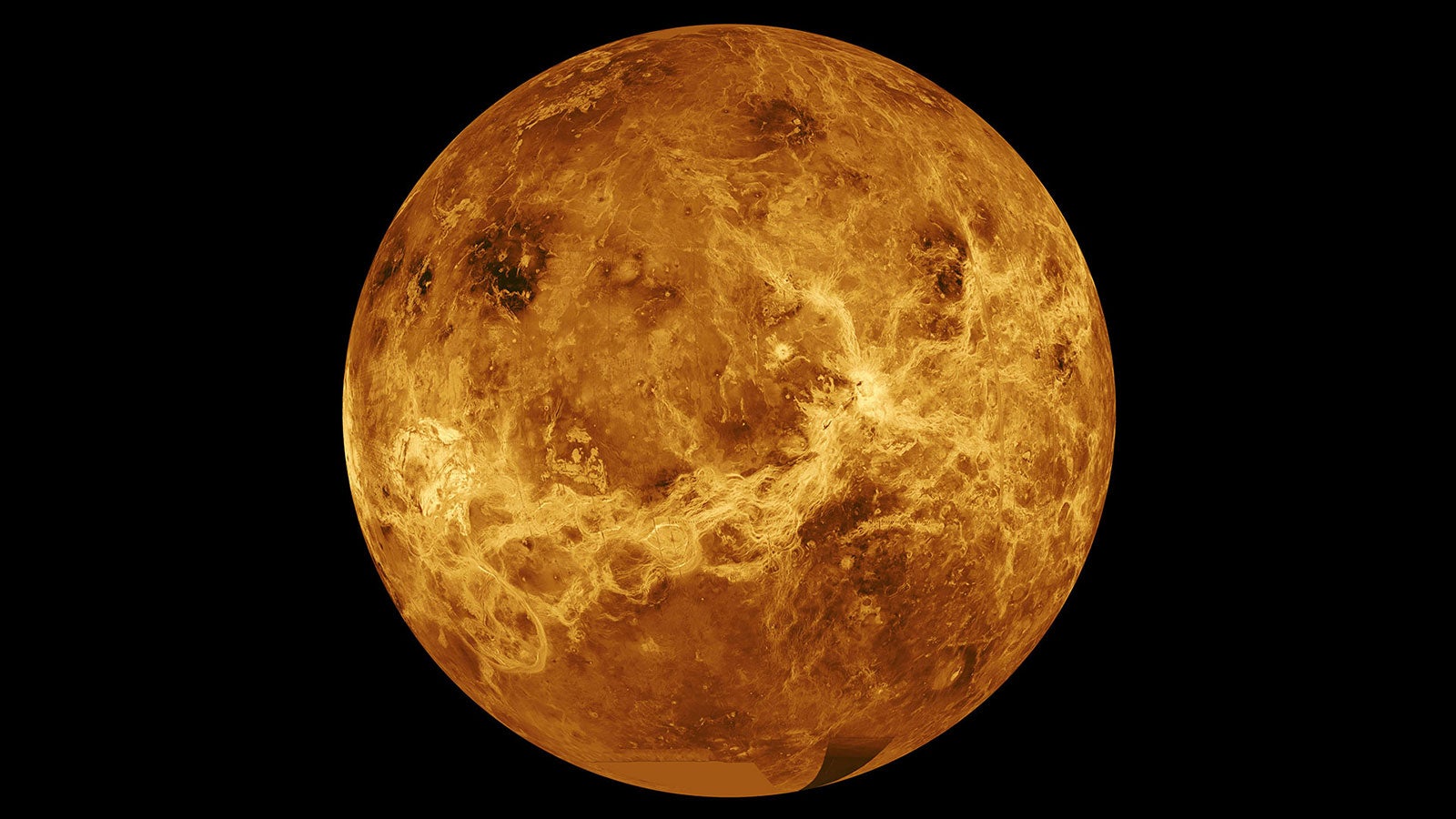‘Was Venus like Earth, was it habitable?’: Nasa is trying to find out
Three space missions to Venus each have different objectives and scientific instruments. But each will contribute to addressing the same overarching question of whether Venus is alive or dead, writes Robin George Andrews

Your support helps us to tell the story
From reproductive rights to climate change to Big Tech, The Independent is on the ground when the story is developing. Whether it's investigating the financials of Elon Musk's pro-Trump PAC or producing our latest documentary, 'The A Word', which shines a light on the American women fighting for reproductive rights, we know how important it is to parse out the facts from the messaging.
At such a critical moment in US history, we need reporters on the ground. Your donation allows us to keep sending journalists to speak to both sides of the story.
The Independent is trusted by Americans across the entire political spectrum. And unlike many other quality news outlets, we choose not to lock Americans out of our reporting and analysis with paywalls. We believe quality journalism should be available to everyone, paid for by those who can afford it.
Your support makes all the difference.Nasa recently stunned planetary scientists when it announced that it was going to send not one but two different spacecraft to Venus by the end of the decade. On Thursday, the European Space Agency declared that it was launching its own mission there: EnVision, an orbiter that would investigate even more of the planet’s mysteries.
Until this month, Venus had been somewhat lonely. Nasa’s last mission to the second planet was Magellan, which burned up in its skies in 1994. Europe’s last foray there was the Venus Express spacecraft, which orbited the planet and studied it from 2006 until 2014. Today, Japan’s climate-observing Akatsuki is the only emissary from Earth in orbit.
With Europe’s EnVision spacecraft added to Nasa’s decision to revisit Venus with the Veritas and Davinci+ missions, it seems the next decade will belong to Venus, and some in the Venusian science community have been rendered speechless.
Upon hearing the news of the EnVision announcement, Martha Gilmore, a planetary geologist at Wesleyan University, who is part of both the Davinci+ and Veritas teams, said: “I don’t even know what to do, my mind can’t... I’m in a weird state.”
“This is the best possible news,” says Paul Byrne, a planetary scientist at North Carolina State University. “You couldn’t have asked for a better situation.”
All three missions have different objectives and scientific instruments. But each will contribute to addressing the same overarching question. “Was Venus like Earth — was it habitable?” says Colin Wilson, a planetary scientist at the University of Oxford and a deputy lead scientist on EnVision.
Today, Venus is a post-apocalyptic wasteland: Its asphyxiating carbon dioxide atmosphere mingles with highly corrosive sulphuric acid clouds; its crushing surface pressures are equivalent to being a mile underwater; and its surface temperatures hit 900F. Curiously though, the presence of a rarer, heavier form of water in its atmosphere indicates that there once was a lot more normal water on Venus.
If that water existed not as steam, but as lakes, rivers, seas and oceans, it would have been the solar system’s second blue marble. How did Earth escape Venus’ fate?
“Some of those answers lie on Earth, but some of them lie on Venus,” says Wilson.
EnVision will study those mysteries with a suite of advanced scientific instruments. Its radar systems will peer through Venus’ thick atmosphere, mapping both the surface and the rocky layers up to 3,300ft below the surface. An array of spectrometers seeing in ultraviolet and infrared light will analyse the atmosphere’s chemical composition, and differentiate between types of rock on the ground. A radio science experiment will be able to use slight changes in the planet’s gravity to parse the layer-cake structure of Venus’ geologic guts.
Venus clearly had a geologically hyperactive past. Although most scientists suspect that Venus is still erupting, the thick cloud cover has prevented confirmation of that idea
All of these instruments will help answer another major query. “Is Venus alive or dead, geologically?” says Wilson.
Venus clearly had a geologically hyperactive past. Although most scientists suspect that Venus is still erupting, thick cloud cover has prevented confirmation of that idea, just as it had prevented the search for the tell-tale movement of faults.
By conducting surgical scientific surveys on specific parts of the planet, EnVision will be able to comprehensively clear away this uncertainty. It can detect the thermal signatures of active volcanoes, sniff out the gaseous plumes from any erupting volcanoes and look for evidence of ongoing tectonic to-and-froing.
The spacecraft will also be able to peer into Venus’ past, looking for the scar tissue left behind by ancient plate tectonics and the relics of its epic, primordial volcanic activity – the sort that some suspect may have set off the runaway greenhouse effect that dried up the planet. It will also investigate the tesserae, curious plateaus that rise above plains of younger lava. Some think these may turn out to be deformed layers of continent-like rock. If so, that means they formed in the presence of liquid water – yet more evidence that Venus was once an ocean world.
As capable as these three missions are, they won’t solve all of Venus’ mysteries, such as whether phosphine, a gas potentially present in the planet’s clouds, is being manufactured by microbial life.
But the hope is that this is the beginning of a second Venusian renaissance. “It’s setting the stage for sustained Venus exploration,” says Byrne, and only a prolonged series of missions to Venus – ranging from more orbiters and probes to atmospheric balloons and landers – will let us discover why it became Earth’s evil twin.
This article originally appeared in The New York Times.
Join our commenting forum
Join thought-provoking conversations, follow other Independent readers and see their replies
Comments